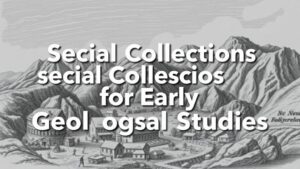Using AI to Cross-Reference Artifact Mentions in Historical Newspapers and Maps
Using AI to Cross-Reference Artifact Mentions in Historical Newspapers and Maps
The integration of Artificial Intelligence (AI) in historical research has opened new avenues for the analysis and cross-referencing of historical artifacts as documented in newspapers and maps. This article explores the methodologies and technologies employed in such endeavors, showcasing how AI enhances our understanding of historical contexts and artifact significance.
The Importance of Historical Newspapers and Maps
Historical newspapers and maps serve as critical primary sources for researchers exploring past events and societal norms. They offer rich, contextual information that can illuminate the circumstances surrounding artifacts from various periods. For example, newspapers from the late 19th century often provide insights into local events, societal attitudes, and the publics perception of cultural artifacts.
- A notable example is the coverage of the 1893 World’s Columbian Exposition in Chicago, where myriad artifacts were showcased, and local newspapers documented reactions and interactions.
- Maps from the same era reveal urban layouts, trade routes, and areas of cultural significance, providing context to artifacts originating from those locations.
AI Technologies in Historical Research
Utilizing AI to cross-reference mentions of artifacts involves several sophisticated technologies, including Natural Language Processing (NLP), Optical Character Recognition (OCR), and machine learning algorithms.
- Natural Language Processing (NLP): NLP techniques enable the analysis of text from historical newspapers, identifying mentions of artifacts and discerning contextual meanings.
- Optical Character Recognition (OCR): OCR technology digitizes printed text from scanned images of newspapers and maps, facilitating data extraction for further analysis.
- Machine Learning Algorithms: These algorithms can analyze large datasets, recognizing patterns, and establishing relationships between artifacts mentioned in different sources.
Case Studies and Practical Applications
Several initiatives have successfully employed AI to enhance historical research. One prominent project is the The historic newspapers project, which uses NLP to analyze archival newspaper data from the United Kingdom. By training algorithms to recognize and categorize artifact mentions, researchers can efficiently compile data on the public discourse surrounding various historical objects.
Also, the use of AI in projects like the Digital Public Library of America has illustrated the utility of cross-referencing artifacts across multiple sources. By integrating OCR with NLP, the project allows users to search for artifacts mentioned in both contemporary newspapers and digitized maps, producing a rich tapestry of interrelated historical narratives.
Challenges and Limitations
Despite significant advancements, leveraging AI in historical research presents unique challenges. The quality of OCR varies, especially with older documents where print quality was poor, leading to inaccuracies in digitization. Also, the nuances of language and context can pose difficulties for NLP models that may misinterpret phrases or fail to recognize colloquial terms used during different eras.
Also, issues of bias in training datasets can also skew findings, as AI models are only as good as the data they are trained on. So, it is crucial for researchers to remain aware of these limitations and to apply critical thinking in their analysis of AI-generated findings.
Future Directions
The future of using AI in historical research is promising. As the field progresses, further enhancements in AI methodologies can lead to more accurate cross-referencing and deeper insights into historical data. Collaborations between computer scientists and historians will be essential in refining these AI tools to ensure that they are tailored to the complexities of historical inquiry.
- For example, improved algorithms could allow for better handling of archaic vocabularies, which would enhance the accuracy of NLP in understanding older texts.
- Also, initiatives to crowdsource historical data classification can help create comprehensive datasets that mitigate bias and inaccuracies.
Actionable Takeaways
For researchers and historians interested in deploying AI for cross-referencing artifact mentions, the following steps are recommended:
- Begin by identifying and digitizing primary sources using OCR technology, ensuring high-quality scans to improve accuracy.
- Employ NLP tools to extract and analyze mentions of artifacts, focusing on context and interrelationships.
- Collaborate with data scientists to tailor machine learning models that address specific historical questions and datasets.
- Constantly review and adjust methodologies to account for biases and inaccuracies, maintaining a critical perspective on AI-generated data.
To wrap up, harnessing AI to cross-reference artifacts in historical newspapers and maps represents a significant leap in historical research methodologies. While challenges remain, the potential for enriched understanding of our past is substantial, paving the way for innovative scholarship in the field.

